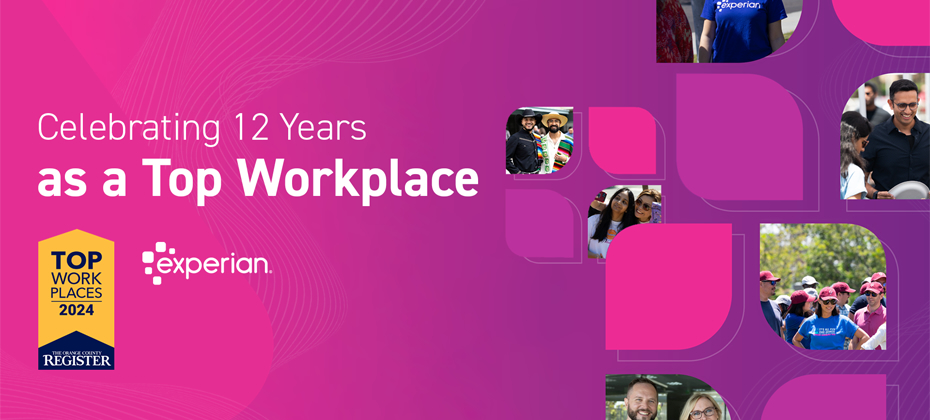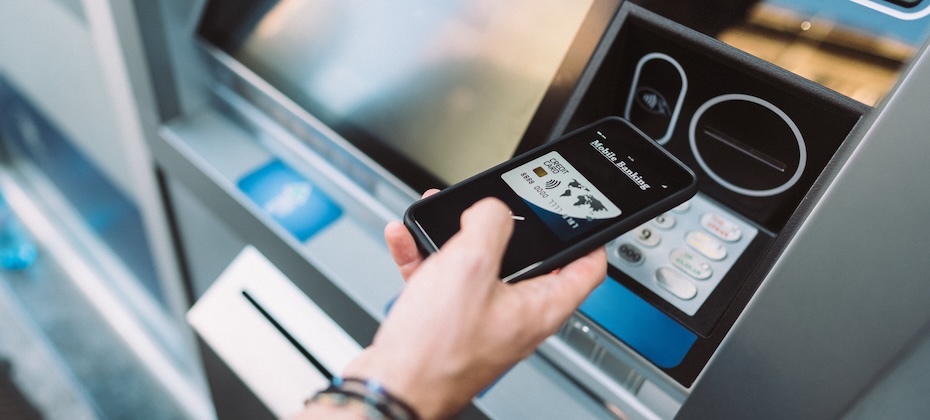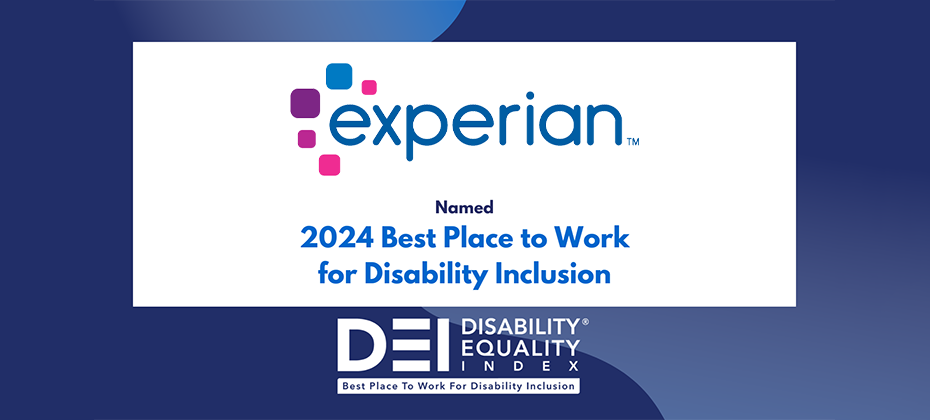At A Glance
At a Glance When an unknown printer took a galley of type and scrambled it to make a type 2ince the 1500s, when an unknown printer took a galley of type and scrambled it to make a type specimen book. It has survived not only five centuries, but also the leap into electronic typesetting, remaining essentially unchanged. It was popularised in the 1960s with the release ince the 1500s, when an unknown printer took a galley of type and scrambled it to make a type specimen book. It has survived not only five centuries, but also the leap into electronic typesetting, remaining essentially unchanged. It was popularised in the 1960s with the releaseince the 1500s, when an unknown printer took a galley of type and scrambled it to make a type specimen book. It has survived not only five centuries, but also the leap into electronic typesetting, remaining essentially unchanged. It was popularised in the 1960s with the releaseince the 1500s, when an unknown printer took a galley of type and scrambled it to make a type specimen book. It has survived not only five centuries, but also the leap into electronic typesetting, remaining essentially unchanged. It was popularised in the 1960s with the releaseince the 1500s, when an unknown printer took a galley of type and scrambled it to make a type specimen book. It has survived not only five centuries, but also the leap into electronic typesetting, remaining essentially unchanged. It was popularised in the 1960s with the release

Experian, the global information services company, has identified five key factors currently making people and organisations more vulnerable to large-scale cyber fraud. Speaking at the renowned Merchant Risk Council EU Congress on May 19th in Seville, Spain, Experian’s Global Identity and Fraud Director, Hugh Steed, shared his insights with nearly 500 eCommerce fraud and payments professionals. A wealth of stolen data available to fraudsters. Wholesale data theft is one of the fastest growing crimes facing people and organisations today, with hundreds of millions of digital identities compromised every year. Fraudsters are increasingly targeting on-line credentials over previously preferred data, such as credit cards. The exponential growth of malware. After data breaches, malware is the criminal’s key method of obtaining digital identities. From mobile applications to traditional desktop platforms, malware manifests itself in many different forms and its volume is ever increasing. Fraudsters are targeting both end users and enterprises to acquire these valuable credentials for use in sophisticated frauds. The frequent username and password reuse by consumers. Experian’s research revealed that the majority of internet users consistently use a small set of usernames and passwords to secure multiple different accounts; including social media, email and online shopping sites. More specifically, people have on average up to 26 online accounts protected by only five different passwords. This greatly increases the risk that fraudsters can use data stolen from one source to successfully access other accounts held by the same user. An increase of multi-channel interaction between customers and business. People now have access to multiple digital and physical channels, enabling them to interact with businesses, manage accounts and make transactions. However, this diverse channel environment also facilitates the work of cyber criminals as each open channel is an opportunity to commit fraud and securing these channels is a significant challenge for enterprises. The trade-off between security and user experience. As companies consider the necessary steps required to increase online account security, they are conscious that they cannot risk adversely affecting the customer experience. Customers making transactions online today expect a seamless journey and are likely to be put off by onerous visible security procedures. Hugh commented: "Experian’s research shows that fraud today is often a complex cycle that starts with data theft and proceeds through a set of discrete staging points, ending with a fraudulent transaction. “Rather than being instantaneous, the fraud process can span weeks or even months often with different criminal organisations involved and data changing hands. However, the very nature of this cycle means that there are systems that can be implemented to detect and stop such fraud early and before it causes losses that are significant in scale. To put things into context, for a handful of our largest customers alone, we have helped them detect and prevent fraud worth over $500 million dollars.” Felipe Fernandez-Atela, President of Experian in Spain, said: "Protecting people and businesses from the threat of fraud is one of our main goals. In fact, companies using our fraud prevention solutions consistently outperform the industry benchmarks in areas such as ‘decline rates’ and ‘fraud rate by order’ – both of which are typically 15 times below the industry average. We have the expertise, both in our products, services and skills of our people to help ensure society is more protected against this type of crime.”
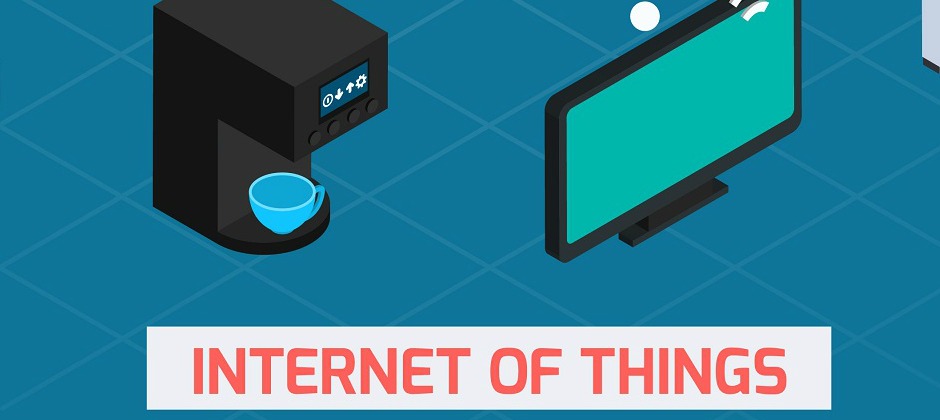
The benefits of the Internet of Things are only as strong as the weakest connected point. Having a plan in place to prevent fraud that businesses and consumers can use to manage risk and increase security when using Internet-enabled products, also known as the Internet of Things (IoT), is critical. Connected devices such as smartphones and tablets, and a tremendous number of consumer products — including cars, heart monitors and household appliances — are now connected to the Internet. Many of these connected products have weak security and controls, creating points of weakness in users’ critical private networks, systems, and data. Adam Fingersh, senior vice president and general manager of Experian’s fraud and identity business, shared several fraud prevention strategies that businesses and consumers can use to manage risk and increase security while using Internet-enabled products, also known as the Internet of Things (IoT). Please read all the security tips on our Insights blog and learn more about Experian’s Fraud and Identity business.

Experian DataLabs in North America and Gimbal, Inc., a leading mobile engagement and location intelligence solution, are working together on breakthrough data and advanced analytics experiments. By leveraging Gimbal’s suite of macro-location geofencing and micro-location beacons, these findings could help retailers offer instant credit to customers as soon as they walk into a store, as well as give creditors the ability to prequalify their customers on demand for car and home purchases based on the location of their mobile devices. “In our lab, we are working on what the future could look like when consumers walk into a retail store, shop for a car or find their dream house,” said Eric Haller, executive vice president, Experian Global DataLabs. “This alliance with Gimbal is one example of how Experian is on the forefront of innovation and doing good things with data.” Experian’s new state-of-the-art DataLabs facility in San Diego, Calif., is outfitted with Gimbal industry-leading beacons to help Experian’s data scientists use breakthrough experiments to analyze data and deliver greater competitive advantages. “We are excited to work with a global data-driven company like Experian to utilize the rich location data our solution creates,” said Brian Dunphy, senior vice president of business development at Gimbal. “Further, it is great to be part of a collaboration effort that could enable Experian’s clients to offer mobile instant credit and prequalification to their customers once they’ve opted in, further helping to make their customers’ journey much simpler by leveraging their mobile devices and smart applications enabled by the Gimbal platform.” Experian DataLabs is staffed by teams of Ph.D. scientists and applied research practitioners with expertise in advanced analytics and modeling, as well as other statistical methods. The labs provide access to Experian resources such as broad, secure consumer and commercial credit data and demographics, which can guide Experian clients in determining their approach. Projects often tackle high-dimensionality problems where computer science, applied mathematics and business acumen intersect to create solutions that can be implemented cost-effectively. Experian DataLabs operates globally with labs in San Diego, Calif.; London, England; and São Paulo, Brazil. To find out more about Experian’s data innovations and the Experian DataLabs, please visit https://www.experian.com/big-data/datalabs.html.

Originally published in MarTech Advisor. As technology increases, today’s consumer continues to demand and expect better service. According to recent Experian data, the biggest challenge for businesses over the next 24 months is increasing customer expectation. It has become more important than ever for marketers to be smarter, more personable, and more relevant than ever before. In order to not get beat by competition, brands need to deliver a personalized and seamless Omnichannel experience. Data will play a critical role in informing decisions and ensuring the customer experience is maximized. This requires you to move from push marketing to insight-driven response and prediction. Insight like time of day, past purchases, weather, location, devices and more make it possible to provide exceptional value through every interaction. But before we can begin focusing on activation, we need to make sure to step back to basic fundamental thinking and think about our customer journey. Identifying Your Customers We have always put customers front and center. The old way to identify customers used to involve past-looking exercises meant to inform future large-scale marketing decisions. We would focus on our best customers and pinpoint key moments in their brand experiences that may need improvement or redesign. In today’s world of customer-centricity, we have to move past the idea of a random sample customer journey. Instead, be ready to react to each unique touch point in a way that adds value and encourages further brand interactions. Today’s version of the customer journey map should cover each individual’s path of touch points, make contextual decisions at each subsequent interaction, and develop and automate the process at scale. With this approach, the unique path each customer has taken up until this moment can inform the next message or offer we deliver at a 1:1 level. This is where predictive analytics come into play. According to TDWI Research, the top five reasons why companies want to use predictive analytics are to predict trends, understand customers, improve business performance, drive strategic decision-making, and predict behavior. In order to truly identify each individual customer, a mix of transactional and behavioral data need to be incorporated into the predictive modeling. Linking Your Profiles Ninety-nine percent of companies believe achieving a single customer view is important to their business, but only 24 percent believe they have achieved it today. According to Experian Marketing Services’ 2015 Digital Marketer Report, the biggest barrier for marketers to achieve cross-channel success is data linkage. For instance, say you have a customer who does all their research online during the week and then over the weekend shops in a brick and motor store to actually make purchases. If brands aren’t identifying the customer as one profile, they are most likely spending too much energy and time on trying to get the digital profile to transact online. There are two ways to establish user identity across devices. The deterministic method relies on personally identifiable information (PII) to make devise matches when a person uses the same email address to log into an app and a website, thereby creating cross-device linkage. Probabilistic cross-device matching is achieved by algorithmically analyzing thousands of different anonymous data points including device type, operating system, location data associated with bid requests, time of day and a host of others to create statistical matches between devices. For example, if a phone, a tablet and a laptop connect to the same networks or Wi-Fi hotspots in the same places every weekday, it’s safe to surmise that all three devices belong to a specific commuter. And while deterministic matching seems like the better more exact solution, users don’t always stay logged in or use the same email address everywhere. That is why it is important to use a combination of these techniques and other supplemental data to ensure you have an accurate single-customer profile. Automating The Process Once we have achieved a clear vision of each customer, we can automate the whole process. The ability to deliver the right message to the right person at the right stage in his or her buying process has increased the speed to conversion. However, it is not as simple as set it and forget it. You need to constantly be adding great content and paying really close attention to what people are responding to. In addition, there is no substitution for a human component. Automation works most effectively when the right team is involved in processing and make sure that customers’ needs are actually being met. The customer journey is and has always been at the backbone of business success. Being able to identify what motivates a customer gives us the insight needed to make smart marketing and business decisions. Today’s technology gives us an easier and quicker means to that data, but it is how we use and manage that data to provide a memorable customer experience that really sets us apart. Marketers need to make sure that every touch is smarter, more personable, and relevant in order to excel and advance. Emad Georgy is the Senior VP of product development and product management at Experian Marketing Services. Follow Emad at @EmadGeorgy, and Experian Marketing Services at @ExperianMkt, on Twitter.

National Small Business Week is finally upon us, and we are proud to recognize the businesses that have had such a profound impact on the country, as well as our local communities. They truly are the heartbeat of the U.S. economy. Experian will be celebrating this week by hosting several activities to help small businesses manage their financial well-being and make decisions that enable success moving forward. Below are some of this week’s activities, as well as some resources that are available to small businesses: OFFERS: During National Small Business Week, small business owners will be able to access a free copy of their business credit report. By monitoring their business credit, small business owners can avoid unpleasant surprises when applying for funding, protect their business from potential identity theft, correct inaccuracies and build their business credit score. EVENTS: Tuesday, May 3 1 p.m. eastern – Experian has teamed with BBVA Compass to present a free webinar that explores the power of building and maintaining business credit, as well as examines how to obtain the capital needed to start a business. Thursday, May 5 1 p.m. eastern – A video chat with Experian and several other small business experts will air to discuss how small business owners can better manage their financial well-being. Learn how small businesses can access financial capital. RESOURCES: We will also post a week-long blog series dedicated to helping small businesses manage and understand their financial situation. Visit http://info.inbound-bis.com/blog to see all the great tips. To get a copy of your business credit report and assistance in understanding the impact maintaining a positive credit profile can have on a small business. To understand how financial plans and changes to commercial credit information can impact a business credit score, visit http://sbcr.experian.com/scoreplanner. To better understand and learn the benefits managing your business credit, visit businesscreditfacts.com At Experian, we understand how vitally important small businesses are to our local communities. After all, they are a critical component of job growth and success to the economy. But we also understand there are a number of challenges small businesses experience along the way. This is why Experian is committed to ensuring entrepreneurs and small business owners have access to the right tools, resources and expert advice to help manage and grow their businesses.

By Lisa Hertzberg, LifeSmarts Program Director Headlines bemoan the lack of personal finance being taught in our schools. Most students will graduate with little to no education on personal finance basics. But, with Experian’s help, LifeSmarts is making a difference for students across the country. Together, we are helping students get on the right path to a lifetime of success by equipping them with the financial knowledge and consumer skills they need to make informed, responsible choices. LifeSmarts, an educational program and scholarship opportunity, offers teens the opportunity to learn about the “real world” while in high school. LifeSmarts prepares students to be knowledgeable consumers and workers, and more engaged citizens. A student from Florida put it this way at the recently-held 2016 National LifeSmarts Championship: “Ignorance is the disease. LifeSmarts is the cure.” As the nation’s premier consumer education program and competition for high school students, the goal of the LifeSmarts program is to create smart, confident citizens prepared for today’s fast-paced, global marketplace. LifeSmarts does this by focusing on five core content areas: personal finance, consumer rights and responsibilities, technology, the environment, and health and safety. LifeSmarts is a program of the National Consumers League, the nation’s longest-serving consumer advocacy organization, and extends NCL’s mission to protect and promote social and economic justice for consumers and workers. LifeSmarts begins in the classroom. Using the treasure trove of lessons and learning activities found at www.LifeSmarts.org, educators provide classroom instruction on money management, budgeting, banking, credit, and much more. Content vocabulary helps educators focus instruction and provides students with a scaffold to use to synthesize new terms and concepts. The fun hook: Competition! What sets LifeSmarts apart and makes it fun for educators and students alike is competition. Students proceed through several levels – often beginning with local competitions in the classroom. When they are ready, students also compete online, at the state level, and state champion teams meet every April, during National Financial Literacy Month, to compete head to head for the National LifeSmarts Championship. This year’s 22nd anniversary event was in Denver, and four days of action-packed competition and fun culminated in the team from Pennsylvania being crowned this year’s national champs. Teams from Florida, Tennessee, and Hawaii also placed. During competition, students correctly answered such challenging questions as these: Name two things you can do to prevent excessive impulse purchases: Your mom co-signed for your credit card. If you don’t pay your credit card bills, whose credit records will be affected? Name the federal agency that enforces credit laws that protect your right to get, use, and maintain credit? Credit can be a valuable tool if you use it wisely. Name one thing you can do to use credit wisely? Name one advantage of the higher education savings account known as a “529”? Signed in 2003, the federal FACT Act allows consumers to request what consumer report for free once every twelve months? Teens gain knowledge through LifeSmarts that they are able to begin using right away in their daily lives—unlike some other traditional high school subjects. They also actively pass this knowledge and their new consumer skills on to peers and family members. Participants recognize an increase in self-efficacy due to participation in LifeSmarts, and, in the words of several recent LifeSmarts alumni, here is how LifeSmarts has helped them: LifeSmarts has helped me gain an interest in the stock market and our economy. In the time since I began in LifeSmarts I have opened an IRA and a money market account. When purchasing a car, I knew it was best to shop around and look for the best deal. And also, since I was buying used, I knew I needed to get the VIN and do a background check on the car and see if it had ever been in any accidents. I looked at several different stores and Web sites before I bought my camera, exercising my right to choose and also finding the best camera for my money. I just moved into my own apartment and have my own bank account and bills to pay. LifeSmarts gave me the know-how to handle my business on my own – from auto, rent and health insurance, to managing my money. I learned that you could actually call a credit card company and ask to have your interest rate lowered, and I did it. It is gratifying to work with long-term partners such as Experian. Over the past 20 years Experian has provided in-kind donations of time and expertise, such as writing competition questions, reviewing content, serving as officials at state and national LifeSmarts competitions, and serving on the LifeSmarts Advisory Board. Our partnership with Experian has provided LifeSmarts participants with a deeper understanding of credit issues, especially credit reports, and credit scoring. Experian has also generously supported LifeSmarts financially throughout that time, providing funding to help LifeSmarts extend its reach to other Student Leadership Organizations such as Future Business Leaders of America (FBLA), Family, Career, and Community Leaders of America (FCCLA), 4-H, and local JumpStart Coalitions. Funding from Experian has also allowed LifeSmarts to explore opportunities for growth in large, urban school districts. By partnering with LifeSmarts Experian has shown a commitment to educating the next generation and investing in today’s youth. When I think of what I didn’t know about consumer issues when I was a 16-year-old high school student, I’m even more impressed by the young people who participate in the LifeSmarts consumer education program and competition. Our goal is that everyone will learn something when they participate in LifeSmarts. So after reading this blog, did you learn something new? Were you able to answer those challenging questions that our champions conquered? For more, follow us on Facebook and check out the 5-question Daily Quiz! Answers: Set a time limit; consider changing how and where you shop; avoid shopping with impulsive buyers; give yourself a set “splurge” budget; keep a list of things you really want/need; keep your credit cards at home; limit the amount of money you carry Both yours and your mom's FTC; Federal Trade Commission Know the real cost of debt; don’t use credit to live beyond your means; read the fine print when comparing credit options; pay your bills in full each month; keep your total credit payments to less than 10% of your monthly income Deposits grow on a tax-deferred basis; when money is withdrawn to pay for higher education, it is taxed at the student’s rate; some states provide tax breaks in addition to the federal tax breaks; the money can be used for colleges in any state Credit report; personal credit report Photos Courtesy of: Jonathan Phillips Photography

Experian Marketing Services, a recognized leader in data-driven marketing and cloud-based marketing technology, today unveiled an audience management platform that will change the way the advertising industry buys and measures media. The Audience Engine platform deterministically links and matches data across the marketing ecosystem in a unified, automated platform for targeting, execution and measurement of addressable advertising campaigns. Advertisers, agencies and publishers can use Audience Engine to build and execute addressable advertising campaigns at scale in just a few clicks. Experian® developed the platform to automate the process of finding an advertiser’s audiences where they are today — at scale, across channels, networks and online and offline platforms. It provides users with a single, agnostic platform to create, understand and activate their addressable advertising campaigns leveraging a combination of first-, second- and third-party data sources. For TV advertisers, this includes linear, addressable and over-the-top audiences, such as connected TV. While in beta over the last nine months, more than 70 brands have used Audience Engine to launch addressable TV campaigns. Brands across verticals including major automotive, travel, retail and consumer packaged goods have already seen success, with an average sales lift of 67 percent. “We built Audience Engine with an open ecosystem in mind. As a result, we’ve been very successful in securing major accounts that have contributed to the impressive scale of our platform,” said Kevin Dean, president and general manager of targeting, Experian Marketing Services. “Our audience management platform allows media companies to monetize their data by making it accessible to the industry in a privacy-compliant, agnostic environment. Meanwhile, the media companies remain in control of their data and how that data is used for marketing.” Key facts about the Audience Engine platform Reach: Users of the Audience Engine platform can reach 85 percent of the entire U.S. population with addressable advertising campaigns. Advertisers can reach 100 percent of the household-level addressable TV operators in the United States through Audience Engine. People-based audiences, not cookies: Unlike a data management platform (DMP), Experian’s audience management platform generates “people-based” audiences by deterministically connecting data from across the industry, including online and offline platforms. It does not rely on cookies. Experian has direct partnerships with over 20 of the country’s largest media providers across TV, online, mobile, email and direct mail to enable deterministic matching and distribution across more than 8 billion variables. Media partners include Facebook, Yahoo, Viant, AOL, Cablevision, AT&T and Dish Network, among others. Users: Audience Engine is for users on both the buy and sell sides of advertising. End users include advertisers, agencies, media publishers and DMPs. Flexibility for distribution: Audience Engine offers users the flexibility to distribute audiences in perfect orchestration with demand side platforms (DSPs) and DMPs including Videology, Turn, MediaMath, x+1 and Lotame. Industry and partner quotes “Experian has become a critical component to today’s addressable ecosystem,” said Jamie Power, managing partner, Modi Media. “In five years, we’ll look back on this platform as a significant milestone in the ease and evolution of Advanced TV Advertising. Their direct link to the MVPD infrastructure drastically improves our ability to implement Addressable campaigns in reasonable time with accurate data and measurement." “Experian’s Audience Engine is integral to the future of TV and advertising,” said Andre Swanston, CEO of Tru Optik, which provides media and entertainment behavioral data for Audience Engine. “Our partnership with Experian has made Tru Optik data on the consumption of streaming media content available across addressable TV, opening an entire new revenue opportunity for our company and providing media companies and agencies with the insights they need to reach consumers, who are increasingly consuming content across multiple screens.” How Audience Engine works Directly in the Audience Engine platform, users are able to: Create custom audiences by selecting from their customer files and Experian’s consumer database (the largest in the world), as well as segments from other unique, emerging data sources. Users see the quantity and scale of the target audience immediately and can export the file within minutes. View audience insights that illustrate who this addressable audience is in terms of geographic, demographic and lifestyle attributes. The audience insight tool can be exported immediately into a report. Choose the channels and portals to distribute the addressable campaign across all channels: online, mobile, email, TV and direct mail. The audience targeting file is validated seamlessly to eliminate duplicate files across audiences. Through Experian’s matching capabilities embedded within the platform, users are able to view where an advertiser’s audience is active, regardless of the channel or platform. The platform then delivers addressable audiences for advertisers and agencies to use in their campaign targeting, all in a privacy-compliant manner. Users can view performance in a closed-loop reporting environment that shows the impact of their addressable campaigns across offline and online sales. “Traditionally, advertisers and media buyers think about the channel first — whether that’s targeting an audience via TV, on Facebook or an app — before they know if their audience is active in that channel. Audience Engine reverses this process,” said Dean. “The traditional approach gives advertisers ‘reach,’ but also results in a lot of wasted money, inaccurate data and irrelevant ads. With our audience-management platform, reach can be achieved with a level of unprecedented precision.” To learn more about the Audience Engine platform, please visit Experian’s website: http://ex.pn/audienceengine.
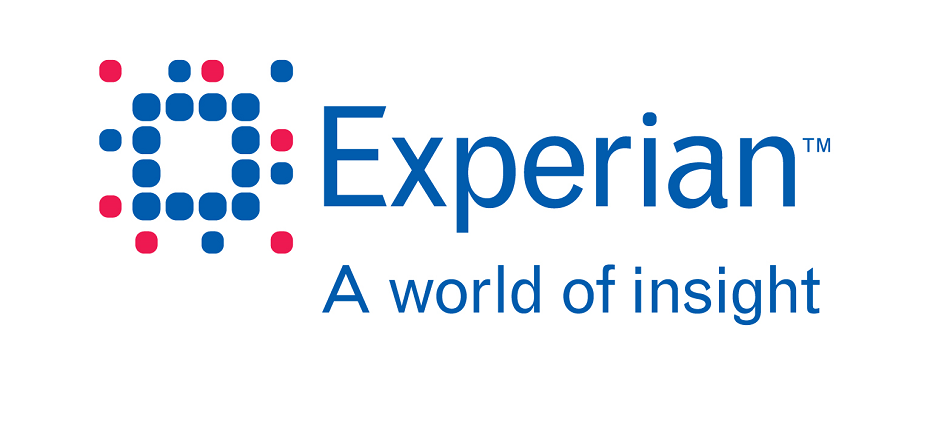
I’m pleased to share that Experian has taken another important step in the transformation of our Consumer Services business, having signed an agreement to acquire CSIdentity Corporation (CSID). The name CSID may not be familiar to most, but it’s a major provider of identity theft and fraud detection solutions in the United States. CSID is the technology platform that sits behind many other identity solution providers, and it’s CSID’s innovation that powers many of the core features of identity protection products marketed under other brands. Experian is familiar with CSID as we have partnered with them in the past, given the synergistic nature of our products. Helping Consumers and Businesses … Beyond being a very important step for our business in North America, I want to highlight how joining forces will help businesses and consumers alike. The combination of our products and services creates a powerful solution in the identity theft protection world. By bringing together Experian’s industry-leading Consumer Services products with the proprietary technology and innovation of CSID’s identity protection platform, we will be able to offer consumers and clients best-in-class credit and identity solutions. This acquisition significantly enhances our ability to address consumers’ advanced needs for tools to protect their identity and detect fraud. CSID has developed a sophisticated and patent-protected technology platform that discovers when identity information has been possibly compromised, and notifies consumers of the activity so that immediate action can be taken. By combining Experian’s credit expertise and CSID’s enhanced capabilities in identity management, we will be able to provide consumers with the ability to manage both their credit and their identity information in one proposition. This two-level approach using credit and identity information enables us to proactively inform consumers that their identification data has been compromised using CSID identity solutions, and advise them that stolen identity information is actively being used in credit inquiries and new account openings. Business Strategy … Consumer adoption of identity-related services is growing globally, driven in part by identity-related trends such as increasing digital activity and the threats around cybersecurity. We now have clear sight of a larger and more dynamic market that provides us with greater opportunities to leverage the entire range of Experian data and analytics capabilities to address the growing needs of consumers. And identity theft protection is a big part of our growth plan. This effort puts the consumer at the center of our decisions. Our aim is to significantly enrich the consumer experience by providing access to a broad range of information, including credit, automotive, health, and identity to help consumers make more informed decisions and control their information. CSID has existing contracts with many industry participants. I’m confident Experian’s breadth of data and analytics capabilities could add real value to these relationships. The Details … As is common in a deal such as this, the agreement is subject to Hart-Scott Rodino regulatory approval. Once that is concluded, we will be in a position to talk in even greater detail about how and why this acquisition will be a powerful win for helping businesses and consumers navigate the modern era of personal identity theft protection services. We’re delighted by the opportunities the acquisition of CSID brings, and we look forward to welcoming the CSID team to Experian. Craig Boundy Experian North America CEO

On Tuesday, Experian held a press conference and ribbon cutting ceremony with San Diego Mayor, Kevin Faulconer to announce and celebrate the expansion of the data and innovation lab in North America. The new 10,000 square-foot state-of-the-art facility will allow Experian to use breakthrough experiments to good things with data. Mayor Faulconer spoke about creating innovative jobs and opportunities in San Diego and welcomed the growth, ingenuity and creativity that Experian’s talented employees will bring to San Diego. Eric Haller, Executive Vice President of Experian’s DataLabs, joined Mayor Faulconer in addressing the three major broadcast news networks in San Diego, as well as reporters from the San Diego Business Journal, San Diego Union-Tribune and Reuters. “At this point, I’d like to think of this not as a finish line for our labs but a starting point. We have a lot of great opportunity ahead of us, and we hope that in this lab we'll start to achieve our vision around the future of banking, retail and automotive,” said Haller. Experian DataLabs currently staffs 30 employees in San Diego and plans on doubling the team within this year. Click the links below to view media coverage from the event. http://app.criticalmention.com/app/#clip/view/22084420?token=f65a02f2-ab51-4766-9f99-deeee5ec8788
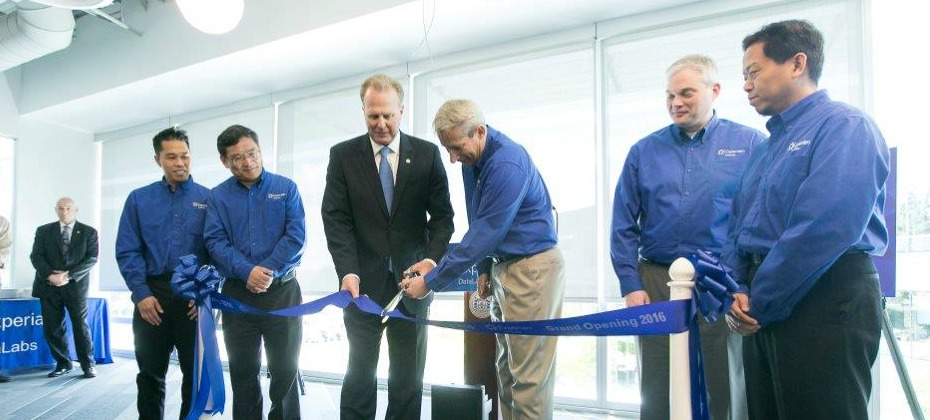
Experian has expanded its growing North America DataLabs in San Diego to further innovation and enable leading data scientists to help clients and businesses solve strategic marketing and risk management problems through advanced data analysis processes, research and development. This new state-of-the-art facility will be equipped with beacons, biometrics and emerging technologies to keep Experian on the forefront of innovation. “We are proud that Experian has selected San Diego as home for its new innovation lab facility. This commitment from an information services giant like Experian is further validation that companies are expanding, growing and helping us to create more jobs in San Diego,” said San Diego Mayor Kevin L. Faulconer. “San Diego is indeed a world-class city of innovation, and our highly skilled scientific and technology talent is clearly helping to make San Diego a destination for new businesses, jobs and opportunities.” Experian DataLabs is staffed by teams of Ph.D. scientists and applied research practitioners with expertise in advanced analytics and modeling, as well as other statistical methods. The labs provide access to Experian resources such as broad and secure consumer and commercial credit data and demographics, which can guide Experian clients in determining their approaches. Projects often tackle high-dimensionality problems where computer science, applied mathematics and business acumen intersect to create solutions that can be implemented cost effectively. The first innovation lab was launched five years ago to provide clients with innovative techniques and applications to capture the value hidden within their data assets. The labs allow data scientists to conduct breakthrough data experimentation to present a larger picture and deliver greater competitive advantages. “We want to provide our team with an environment that will further inspire them, spark their powerful creativity and drive innovation for Experian and our clients,” said Eric Haller, executive vice president, Experian Global DataLabs. “I’m so very proud of the team and to be part of a truly innovative and entrepreneurial company like Experian that had the foresight five years ago to allow us to create these labs. The future is bright for us and our clients, and I can’t wait to see the good things with data that will come out of this new facility.” Experian DataLabs operates globally with labs in San Diego, Calif.; London, England; and São Paulo, Brazil. Click here to view video coverage from yesterday's ribbon cutting ceremony featuring San Diego Mayor Kevin Faulconer and Executive Vice President of Experian DataLabs, Eric Haller.
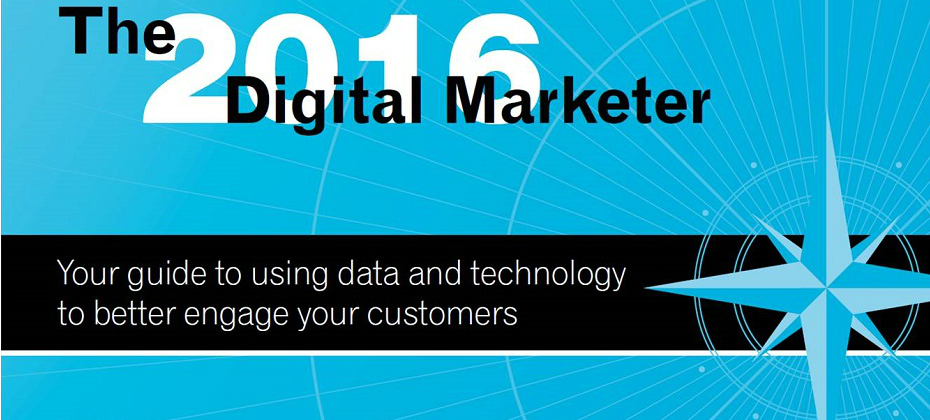
Experian Marketing Services released its 2016 Digital Marketer Report. The eighth annual study reveals the challenges, priorities and other key issues impacting marketers worldwide. This year, the top challenge marketers faced also is their top priority: knowing their customers’ needs, wants and attitudes. Thirty-eight percent of marketers cited knowing their customers as their top challenge in 2016, and 52 percent named enhancing their customer knowledge as one of their top three priorities. Other top challenges indicated by marketers include increasing visibility over competitors and staying ahead of new marketing trends. The integration of technology and collecting, linking and managing data also were key priorities. “The future of marketing is being driven by sophisticated, channel-agnostic consumers who expect exceptional experiences every time. This reality poses a real challenge for organizations, as consumer intolerance for mediocre brand interactions puts more pressure on brands to leverage their data and technology,” said Ashley Johnston, senior vice president of global marketing at Experian Marketing Services. “Today’s brand marketers realize the significance of knowing their customers, but it’s still problematic. Our research found that regardless of the company size or industry, marketers around the globe still find this to be a top challenge.” Findings from the study will be explored in detail during a live Webinar on April 13, 2016, which will include an insider look at how Publishers Clearing House has overcome data and technology challenges to center its marketing programs on the customer. Webinar attendees will receive an exclusive Digital Marketer cheat sheet that highlights the report’s top statistics. To reserve your spot for the Webinar, sign up at https://www.experian.com/marketing-services/digital-marketer-report.html. Experian Marketing Services surveyed more than 1,000 marketers worldwide to identify the biggest opportunities and challenges for marketers around the world. The annual report benchmarks the key issues that brands face as they try to engage audiences with relevant messages in an often complex digital environment. Additional findings of interest from the 2016 Digital Marketer Report: Eighty-one percent of marketers report challenges in achieving a single customer view Enterprises cite making messages contextually relevant as their top challenge Seventy percent of respondents work in marketing teams that are integrated either fully or somewhat, up from 61 percent in 2015 Personalization helps achieve a 158 percent increase in click rate Sixty-six percent of marketers plan to implement predictive modeling over the next year and 68 percent plan to run mobile campaigns Eighty-six percent of marketers build segmented audiences for paid advertising “Now in its eighth year, the Digital Marketer Report contains key insights and trends that thousands of marketers have come to rely on every year,” added Johnston. “Our research and analysis focus on the areas we anticipate being the most impactful for marketers moving forward — particularly for brands that are committed to surprising and delighting their customers with every interaction.” The full 2016 Digital Marketer Report can be downloaded here: http://go.experian.com/dm16report. Past editions of the Digital Marketer Report have been recognized with awards such as the Killer Content Award (Demand Gen Report) and Stevie Award® (American Business Awards).
![[Infographic]: Off-lease Vehicles Surge Back into the Market](http://www.experian.com/blogs/news/wp-content/uploads/2016/04/Feature-Leasing-Image1.png)
As automotive leasing trends to new heights, a rapid influx of off-lease vehicles are returning to market. Experian Automotive’s latest infographic explores the surge in off-lease vehicles, including which models and vehicle segments are most popular. Click here to download this infographic.

